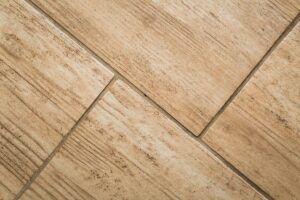While mosaic tiles may be tricky to work with, they look fantastic when they’re applied.
Mosaic tiles tend to be supplied as sheets already fixed to a soft mesh backing. Ordinarily, these sheets are 300mm square, enabling large areas to be tiled without worrying about spacers between the individual mosaics.

When you first discover these sheets, you’ll probably breathe a huge sigh of relief! However, just because you don’t have to juggle thousands of mosaic tile pieces all the time, it doesn’t mean that installing mosaic tiles is always a simple task.
There are advantages and disadvantages to applying mosaic tiles both individually and on a backed sheet.
One downside to applying mosaic tiles using a backed sheet is that it can be challenging to apply even pressure across the whole sheet. The result could be that some tiles sink too deeply into the adhesive, whilst others are falling away.
Professional tilers will, no doubt, have accumulated methods of avoiding this issue, however, that is not to say all tilers (no matter what their experience) shouldn’t bear potential issues with mosaic tiling projects in mind.
Some tips for overcoming a sinking backed sheet (aside from having enormous, flat and extremely steady hands!) may be to invest in some rigid mesh backing sheets. These sheets are usually self-adhesive and applied straight to the back of the sheet of tiles. They can then be handled like a larger tile and will have a flat, professional look.
Putting some time into the preparation of the walls, starting with a completely flat surface will save a lot of work and time as you start to apply the mosaics.
If you are not used to working with mosaic tiles, don’t be daunted or put off!
Here are some exclusive tips for mosaic tiling:
- Turn the sheets over to cut them – if sheets of tiles need trimming, turn them over and trim with a sharp utility knife.
- Avoid cutting tiles – think ahead and spread the gaps, or squeeze them, to ensure a full mosaic tile fits the final gap.
- Use professional equipment – if tiles do need cutting then aim to use the best cutter you can afford to buy or hire.
- Clean as you go – adhesive lumps protruding through the grout spaces may end up being visible. As the adhesive starts to harden it is worth going over the gaps with an old toothbrush before grouting.
- Go easy on the grout – with potentially hundreds of edges to be cleaned after grouting, it is worth taking more time grouting the mosaics than might be the case with larger tiles.
Mosaic tiles are commonly found used as a decorative feature, often breaking up a wall of plain tiles in a bathroom. When planning a bathroom or kitchen it might also be worth considering a mosaic splashback.
Above a sink, behind a cooking hob or kitchen worktop, a mosaic splashback can transform a room. As well as boosting the aesthetics of a home, mosaic tiles create a washable surface where water or food could stain a plain wall.
It’s not just walls that would benefit from mosaics. Consider adding a glamorous touch to the bathroom by tiling the shower floor with glass mosaic tiles. Whilst large glass tiles might be too slippery for floors, the network of grout lines on a mosaic floor will provide substantial grip.
A bathroom designer could create endless patterns with mosaics by laying them individually, maybe have a sea life scene on your shower floor.
The challenges of tiling with mosaics are almost certainly out weighed by the potential impact on your home’s charisma.
If you’d like to master your skills when it comes to tiling with mosaics, UK Pro Tiling Training can help.


